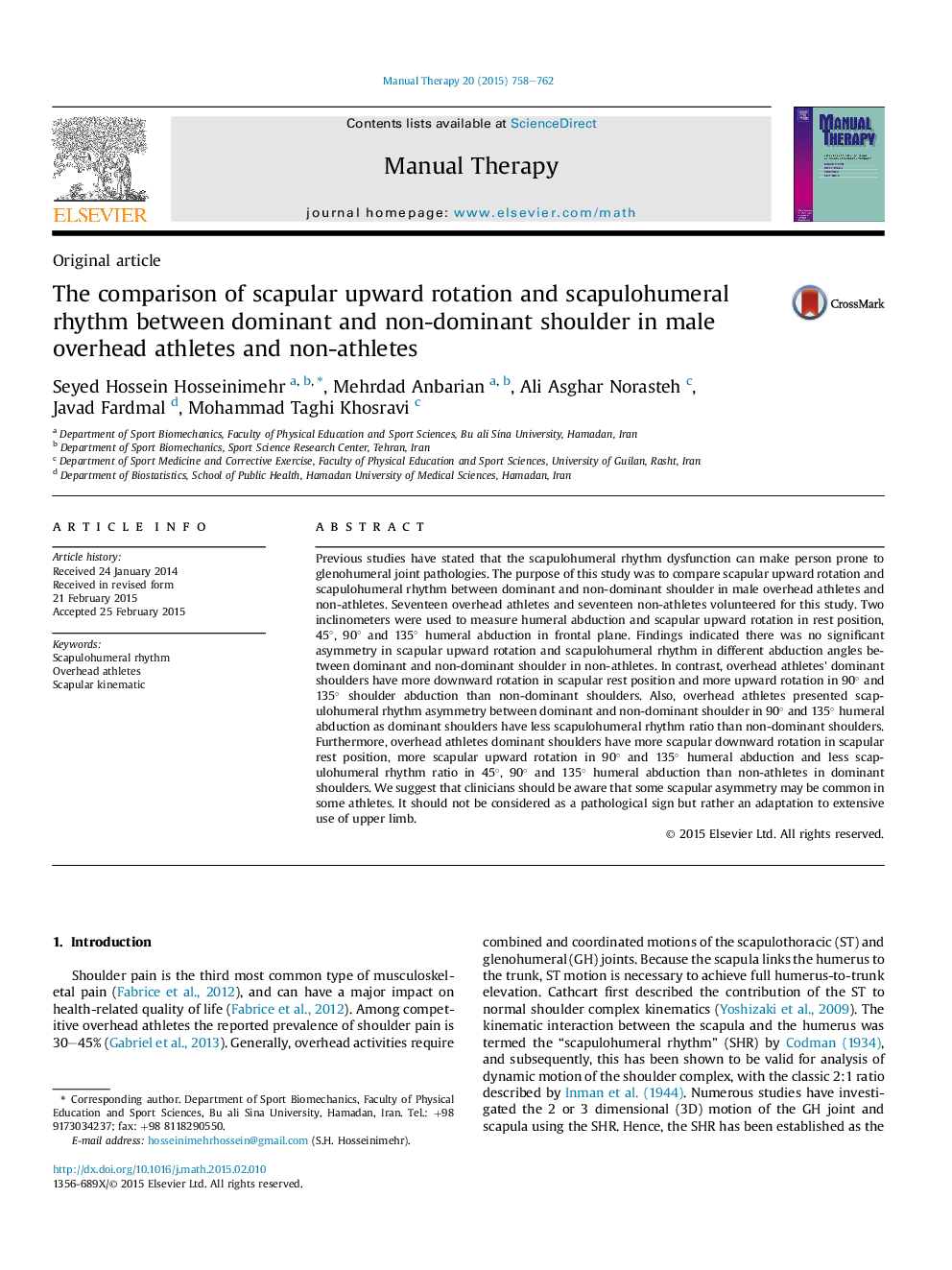| کد مقاله | کد نشریه | سال انتشار | مقاله انگلیسی | نسخه تمام متن |
|---|---|---|---|---|
| 2624749 | 1563098 | 2015 | 5 صفحه PDF | دانلود رایگان |
• We compare the scapulohumeral rhythm between dominant and non-dominant shoulder.
• Non-athletes didn't present any asymmetry in scapular upward rotation and scapulohumeral rhythm.
• Overhead athletes presented some asymmetry in scapular upward rotation in scapular rest position, 90° and 135° abduction.
• Overhead athlete's dominant shoulders presented less scapulohumeral rhythm ratio than non-dominant shoulders.
• Clinicians should be aware that some degree of scapular asymmetry may be common in some overhead athletes.
Previous studies have stated that the scapulohumeral rhythm dysfunction can make person prone to glenohumeral joint pathologies. The purpose of this study was to compare scapular upward rotation and scapulohumeral rhythm between dominant and non-dominant shoulder in male overhead athletes and non-athletes. Seventeen overhead athletes and seventeen non-athletes volunteered for this study. Two inclinometers were used to measure humeral abduction and scapular upward rotation in rest position, 45°, 90° and 135° humeral abduction in frontal plane. Findings indicated there was no significant asymmetry in scapular upward rotation and scapulohumeral rhythm in different abduction angles between dominant and non-dominant shoulder in non-athletes. In contrast, overhead athletes' dominant shoulders have more downward rotation in scapular rest position and more upward rotation in 90° and 135° shoulder abduction than non-dominant shoulders. Also, overhead athletes presented scapulohumeral rhythm asymmetry between dominant and non-dominant shoulder in 90° and 135° humeral abduction as dominant shoulders have less scapulohumeral rhythm ratio than non-dominant shoulders. Furthermore, overhead athletes dominant shoulders have more scapular downward rotation in scapular rest position, more scapular upward rotation in 90° and 135° humeral abduction and less scapulohumeral rhythm ratio in 45°, 90° and 135° humeral abduction than non-athletes in dominant shoulders. We suggest that clinicians should be aware that some scapular asymmetry may be common in some athletes. It should not be considered as a pathological sign but rather an adaptation to extensive use of upper limb.
Journal: Manual Therapy - Volume 20, Issue 6, December 2015, Pages 758–762
